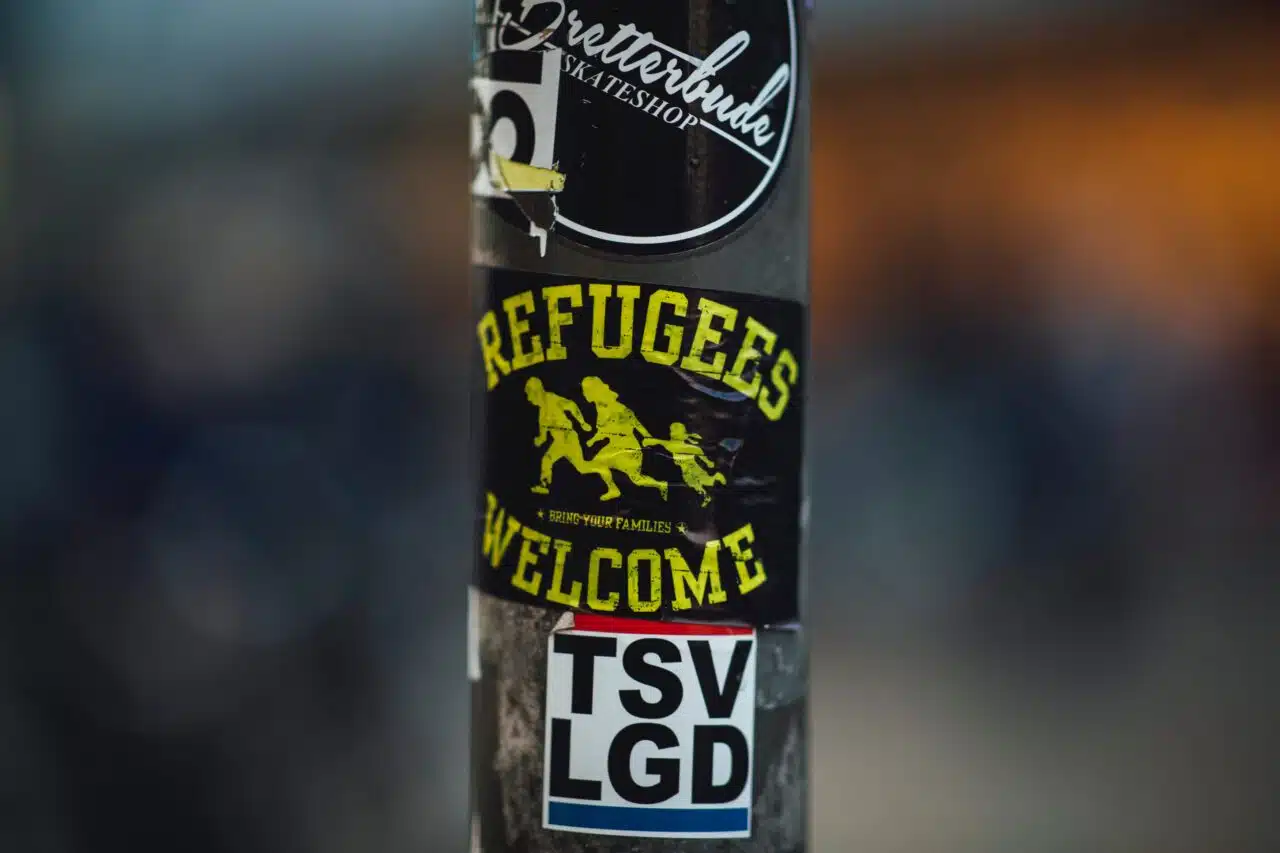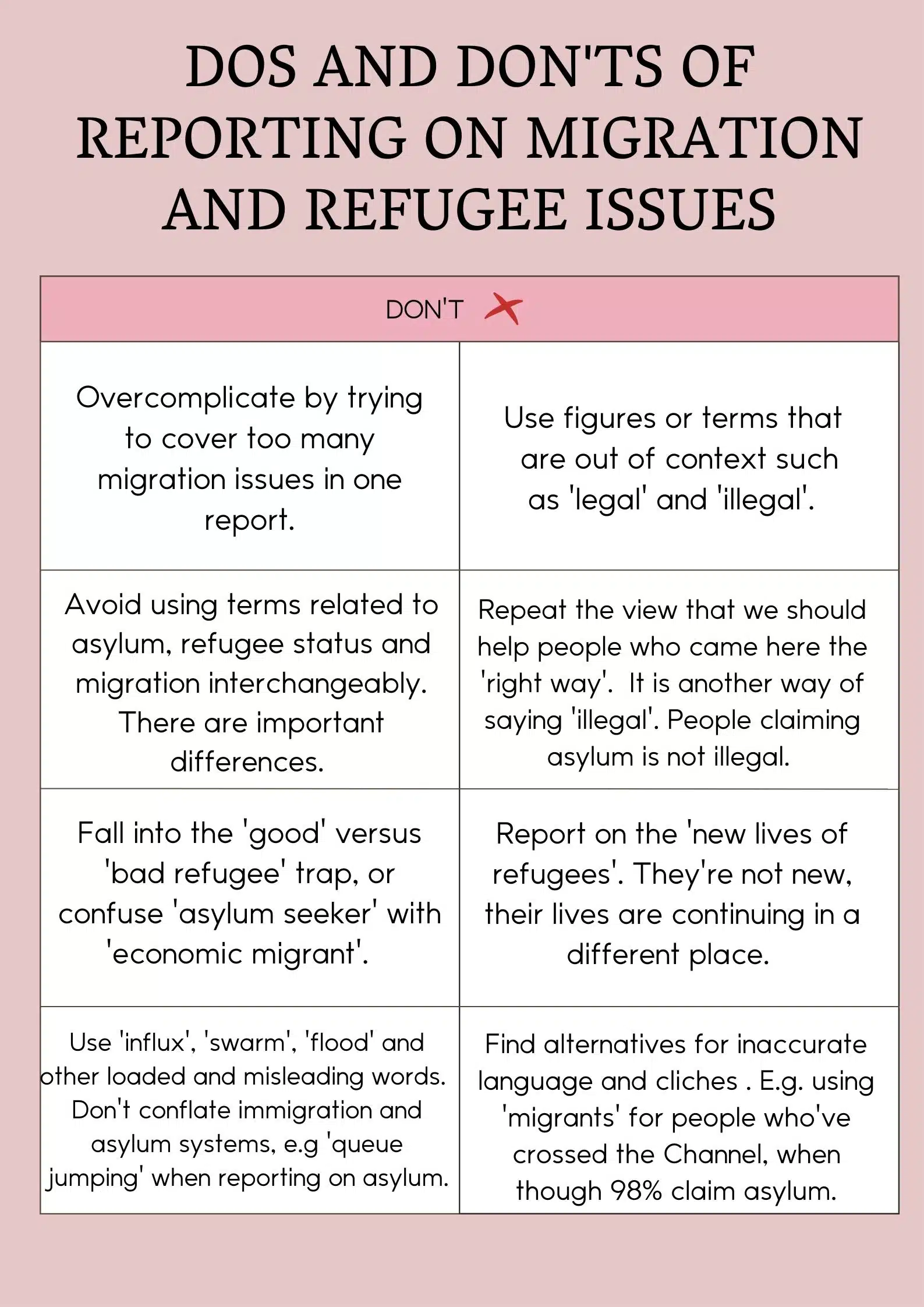What the data actually tells us about people seeking asylum
Posted by IMIX on April 5, 2022In recent weeks, several tabloid columnists have complained about “illegals” who they claim are jumping the queue ahead of “genuine” refugees from Ukraine and Afghanistan.
In a paragraph that sums up this attitude, Sun columnist Trevor Kavanagh wrote:
‘These illegal opportunists — mostly young men, some claiming to be children — barge their way in ahead of genuine asylum seekers from war-torn countries such as Ukraine and Afghanistan.’
Facts famously never get in the way of a good story, but as this one has been repeated ad nauseum by the Home Secretary, we thought it worth addressing.
‘These illegal opportunists’
Under international law, anyone has the right to apply for asylum in any country that has signed the 1951 Refugee Convention – drawn up in the aftermath of the Holocaust and World War II – and to remain there until the authorities have assessed their claim.
The 1951 Convention also recognises that people fleeing persecution may have to use irregular means in order to escape and claim asylum in another country, meaning they may not be able to obtain visas or formal travel documents before fleeing their home country.
There is no formal visa that allows you to travel to the UK to claim asylum.
The only other opportunity to be recognised by the British government as a refugee is through a resettlement scheme or family reunion. Currently, the UK resettlement scheme has no targets, the Afghan citizens resettlement scheme has been backfilled by people who were already in the UK, and the Homes for Ukraine scheme has so far issued only 2,700 visas despite more than four million refugees fleeing the war.
‘Mostly young men’
The Home Office’s own asylum statistics show that thousands of women claimed asylum in the UK last year, and roughly one in five asylum seekers in total was a woman.
‘Some claiming to be children’
Although it’s true that there have been occasions where an asylum seeker misled authorities about their age, identifying the exact age of someone in their late teens is extremely difficult, and the Home Office’s current approach of judging based on “appearance and demeanour” is hardly scientific. Age assessments have been overturned in court.
The Home Office’s own guidance acknowledges that many unaccompanied children do seek refuge in the UK, stating: ‘Many individuals without documentation are clearly children.’
‘Barge their way ahead of genuine asylum seekers from war-torn countries such as Ukraine and Afghanistan’
A lot to process here. Anyone who feels they are facing persecution on the grounds outlined in the Convention has the right to claim asylum. It’s up to the Home Office and the courts to decide if they are “genuine” — in which case they should be granted refugee status.
According to the Refugee Council’s analysis of Channel crossings data, seven in ten people on small boats came from just five countries – Iran (brutal regime), Iraq (chronically unstable), Sudan (human rights abuses), Syria (war and brutal regime) and Vietnam (human trafficking) – and the top ten countries included Afghanistan (brutal regime), Yemen (war) and Eritrea (brutal regime).
If Afghans are among the top nationalities crossing in small boats, how can they ‘barge their way ahead’ of themselves?
Unsurprisingly, people who seek safety from many of these countries have a strong success rate of claiming asylum – as high as 88% for Syrians, 84% for Eritreans and 70% for Sudanese and Yemenis. Overall, the analysis concluded that 61% of people crossing in small boats would be recognised as needing protection.
What the data actually says
The Home Office data on asylum seekers in 2021 paints a very different picture of people seeking safety.
It’s a reminder that one person’s holiday destination is another’s hell, with Turkey, Thailand, Malaysia, Sri Lanka and Jamaica among asylum seekers’ countries of origin. The data doesn’t include the reasons for the claim, but many asylum seekers may be political dissidents or persecuted minorities in otherwise “safe: countries.
It’s a reminder that repression in Eastern Europe didn’t start on 24 February; 26 people from Belarus claimed asylum last year. And that being targeted by violent gangs can be as terrifying as war, as 81 applications were from El Salvador.
Most importantly, it’s also a reminder that the photos of small boats, striking as they are, represent nothing like the real and complex situation of asylum seekers in the UK.
We can’t stop the photos, but we can think about other ways to tell the stories of what asylum really is – and how the precious idea of helping someone rebuild their life could be lost forever under the Nationality and Borders Bill.
Media reporting on migration
When reporting on forced migration, language and checking facts can make all the difference. We crowdsourced some thoughts from our friends across the refugee sector which may be useful to check if you are covering a story about refugees.
Thanks for everyone who contributed over on Twitter.






